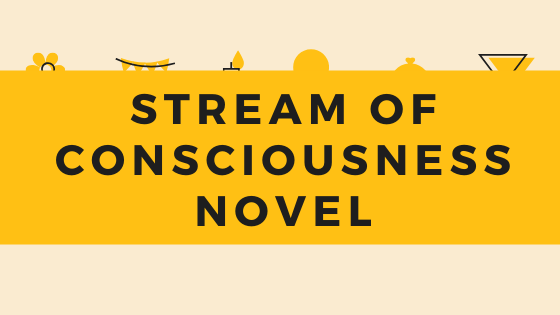The stream of consciousness novel is an improved and more delicate form of the psychological novel, which Richardson, George Eliot, Mrs. Gaskell, and many others treated long before. The term ‘stream of consciousness’ was, perhaps, used first by May Sinclair in connection with Dorothy Richardson’s novels. What characterizes this class of novel is the treatment of a character-a man or a woman—not in their external life and actions, but in their inner world of psychology. A deep probe is made here into the dark corridor of the human mind, and an analytical survey is attempted to the intricate flow of the human brain. The technique here is to render consciousness active in itself, as it flows from moment to moment. This technique is frequently used, with varying degrees of intensity, by Dorothy Richardson, James Joyce, and Virginia Woolf, three notable names in this kind of fiction.
The stream of consciousness novel is concerned with the atmosphere of a mind. It is not a novel of incidents or action, but instead treats the inner world of man. It depicts and illuminates the particular moments of human experiences and feelings, and reveals how a mind is affected at its core by the same. It shifts from external reality to inner revelation, from the outward world of action to the inner realm of reverie.
The central aspect of this class of novel is its inward turning towards mental experiences and shocks. The novelist exposes how a man’s mind moves mysteriously and how it flows continuously yet quite intricately. He makes a penetrative analysis of this tendency of the mind, dissecting it in all its elusive and dynamic aspects. His is an expressionist technique to reveal different characters- their inmost thoughts, moods, feelings, however inconsequent or fragmentary these may be. There may appear to be something chaotic, but in essence, the whole approach is consistent.
The novel is often claimed as a modern epic. No doubt, a novel may possess the vastness of an ancient epic in its plot and characterization. But it is particularly an epic of human psychology. The intricate and mysterious flow of the human mind is brought out in a stream of consciousness novel, and here it assumes an epic character not in its plot-construction, but in its treatment of human psychology. Of course, such a novel has a plot, but the purpose of the plot is not to tell a story of external life but to reveal, as noted already, the inward trend of the mind. Indeed, it has no story in the old conventional sense, and its chief characteristic lies in the treatment of the inner world of certain men and women in a certain situation or background.
The stream of consciousness novel is, in reality, a record of the inner stream of a human mind. It presents a character in a particular situation, and the trend of his or her thinking or feeling is scrutinized with an artistic exactness. Its effectiveness lies in the delineation of a character more graphically, accurately, and impressively than what is found in traditional novels. It brings to the surface the working of the subconscious state of mind, which is as real as life itself.
It is quite interesting to examine how and where the stream of consciousness technique originated in English fiction. Something like this is found to occur in the psychological introspections made by several classical novelists of the past, including Richardson, Smollett, Fanny Burney, Sterne, George Eliot, Mrs. Gaskell, and, of course, Dickens, among others. Something this, too, occurs when a character is found to subject himself or herself to the impassioned self-scrutiny, as seen in Jane Austen’s Emma. Sterne’s Tristram Shandy may be taken as a specific instance in this respect. This is claimed even as the first real stream of consciousness novel. But the technique has more sophistication and exclusiveness in modern English fiction after Joyce and Virginia Woolf.
Some of the most famous examples of Stream of consciousness novels are:
- James Joyce’s A Portrait of the Artist as a Young Man, Ulysses
- Henry James’s Portrait of a Lady
- Virginia Woolf’s To the Lighthouse, Mrs Dalloway
- Dorothy Richardson’s Pilgrimage
- Jack Kerouac’s On the Road
- William Faulkner’s As I Lay Dying
- Fyodor Dostoyevsky’s Notes from Underground

Leave a Reply